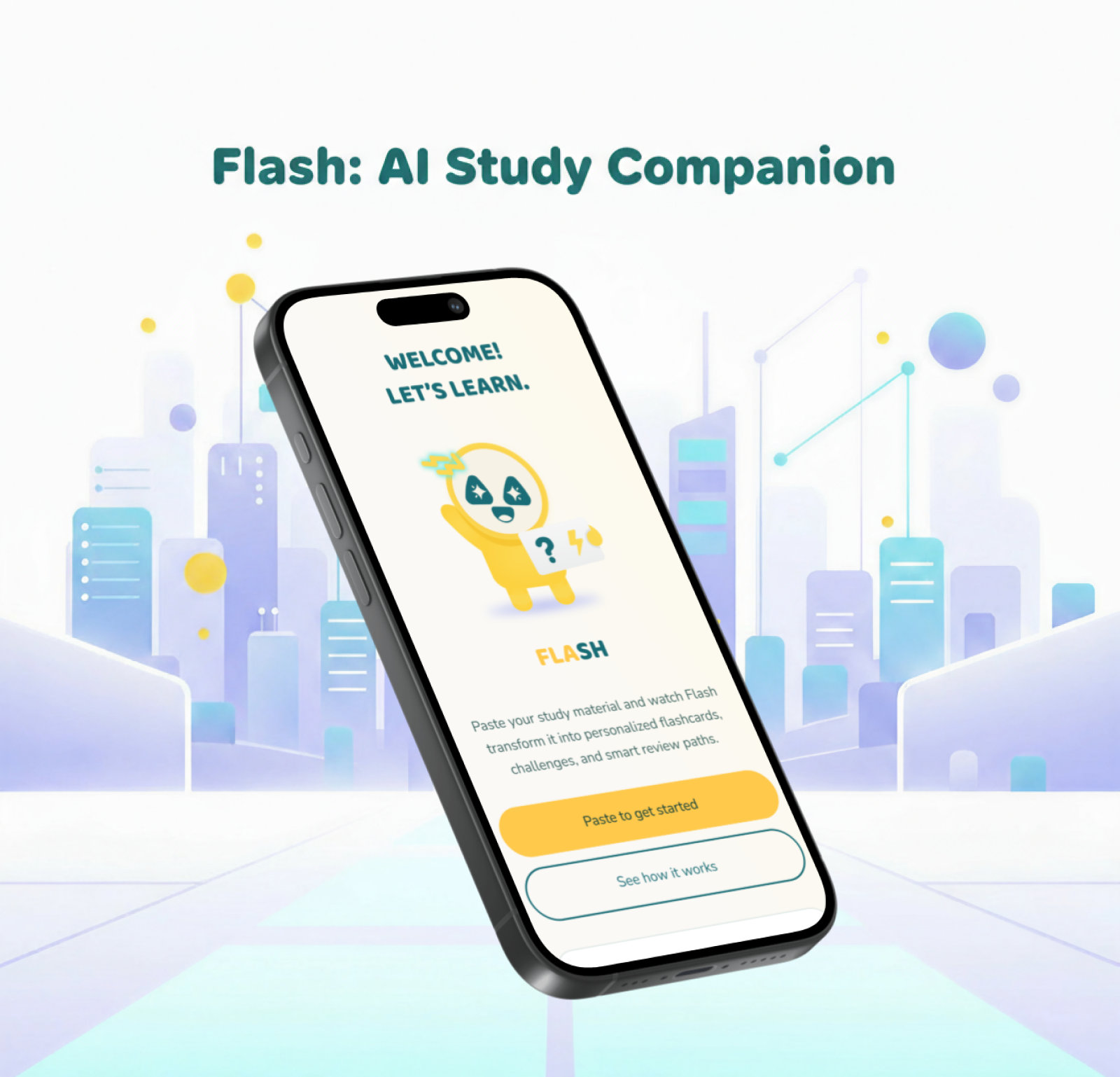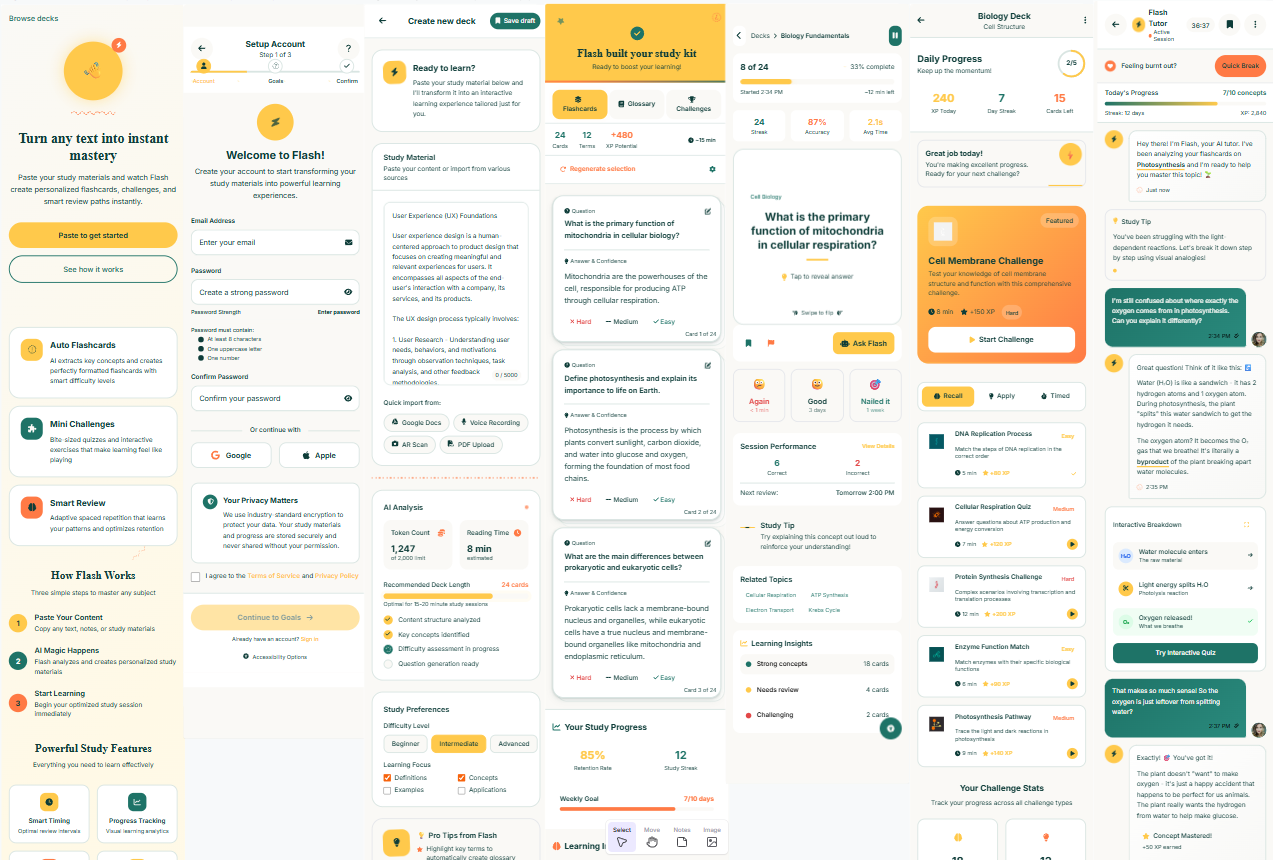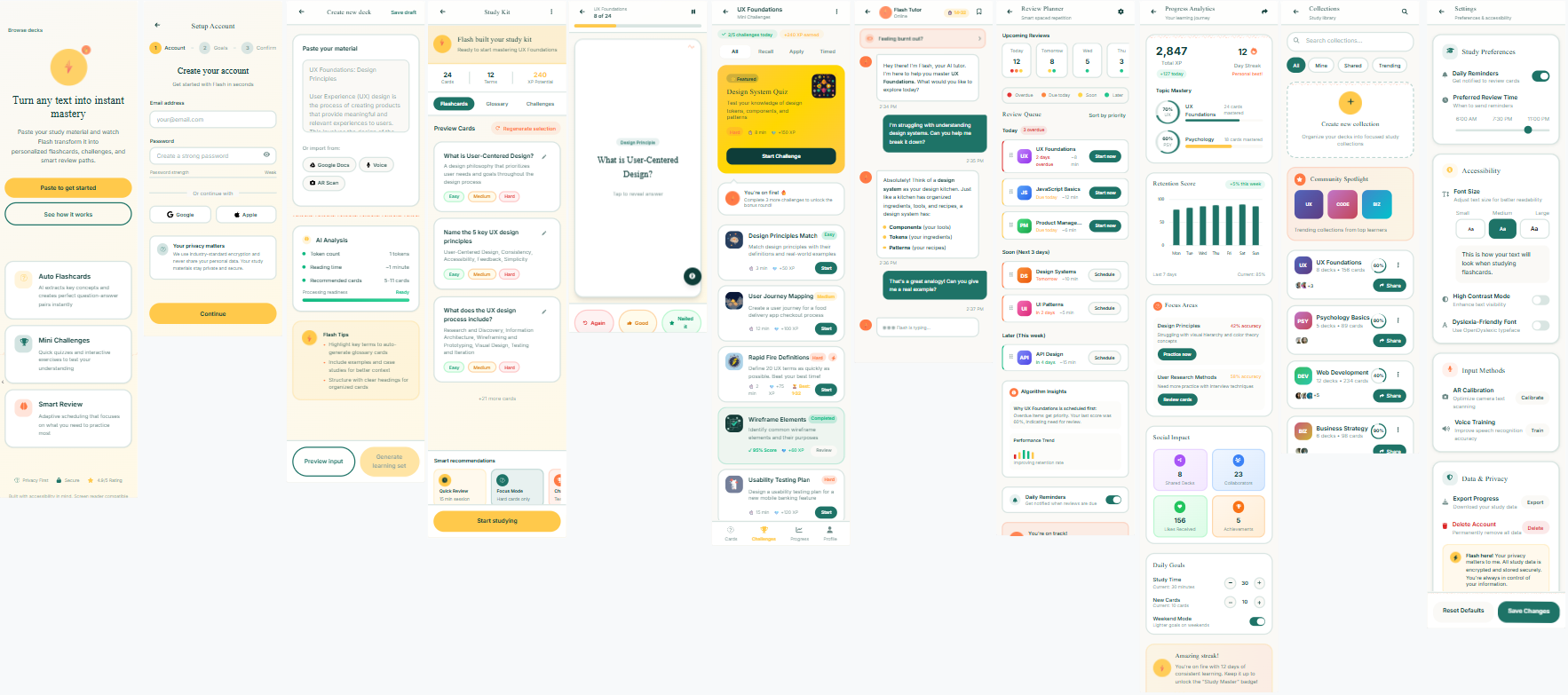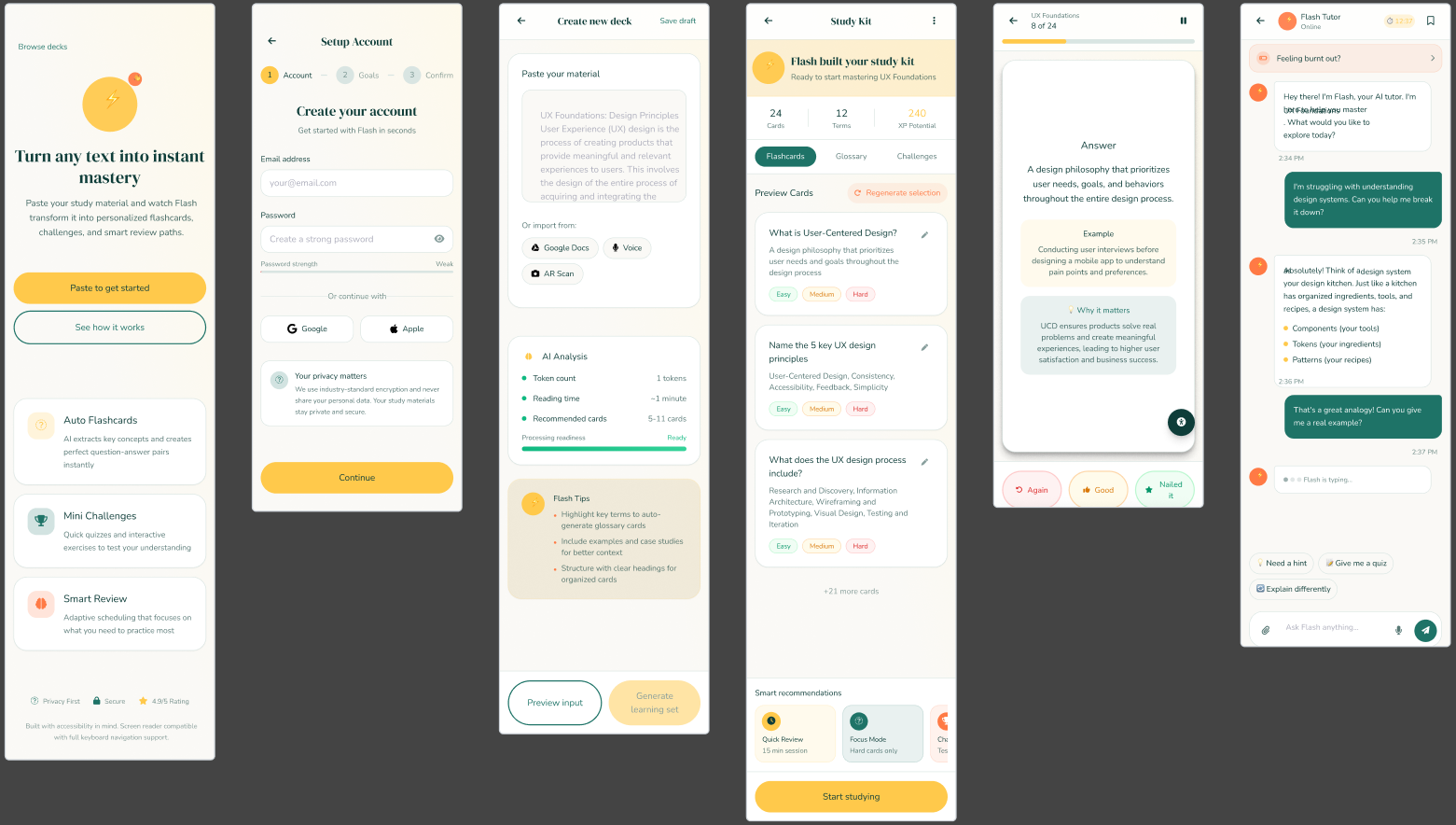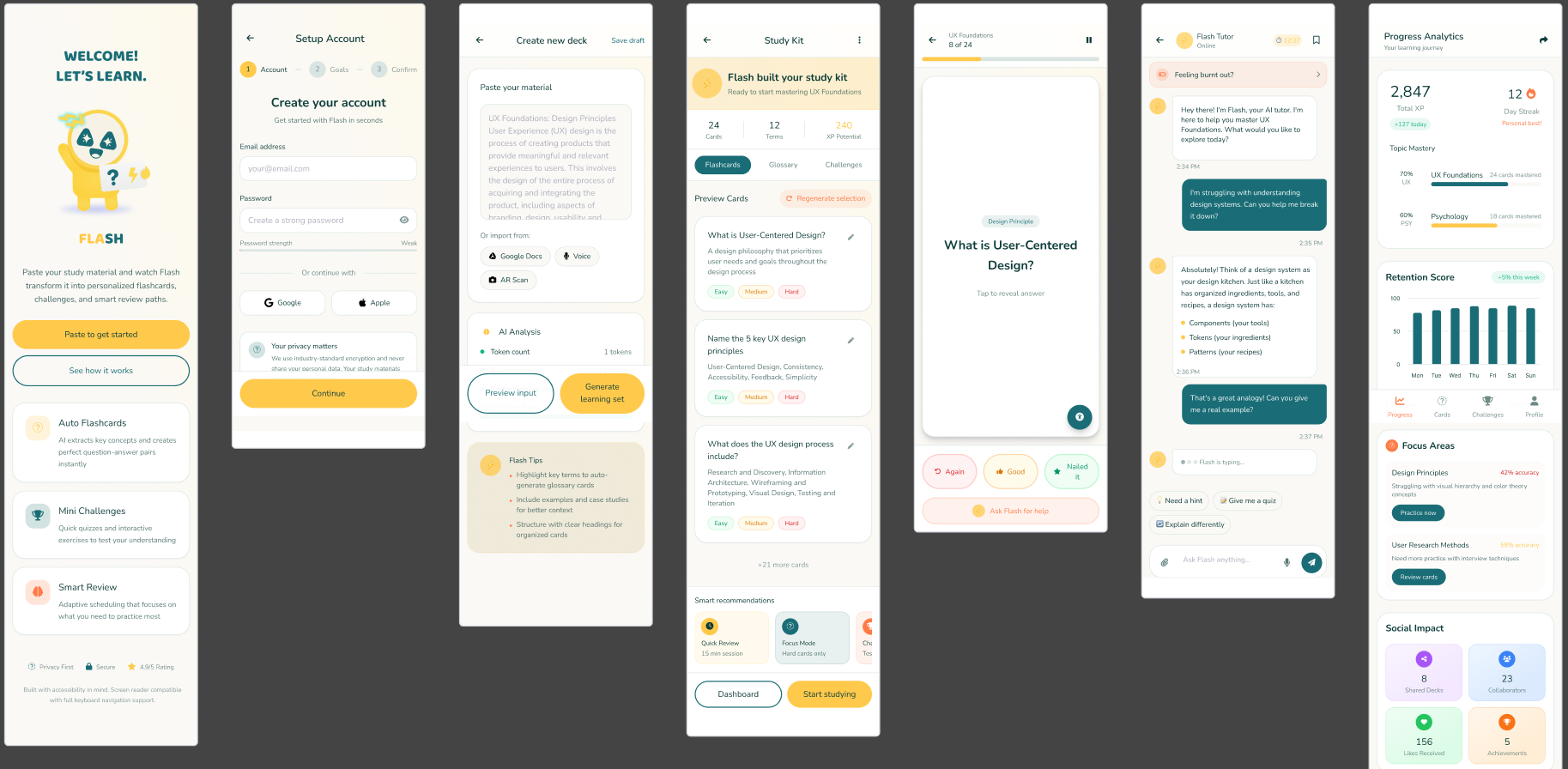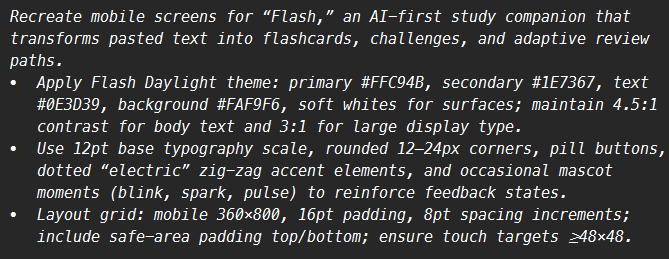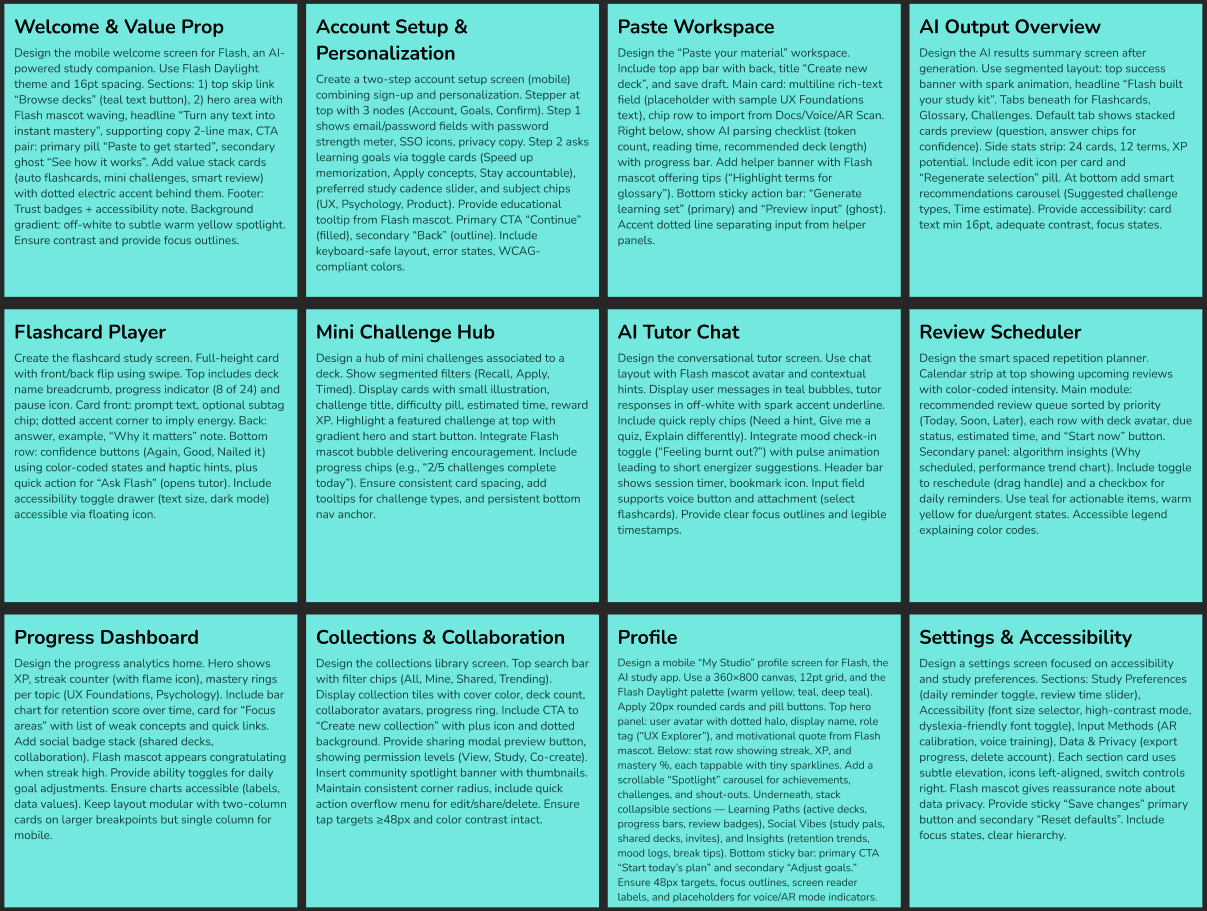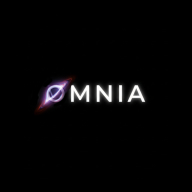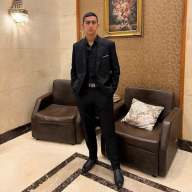Flash: AI Study Companion⚡
This is my public share of Flash, the Quizlet-inspired mobile app that uses AI to turn pasted text into flashcards, glossaries, spaced-repetition plans, and playful challenges. I’m sharing my progress, welcoming feedback, and continuing to build beyond this stage.
Idea
"I want to design a mobile app inspired by Quizlet that uses AI to transform text into interactive learning experiences. The app, called Flash, automatically generates flashcards, glossaries, and spaced repetition schedules from any text a user pastes (e.g., course notes, articles, or UX lessons).
The goal is to help learners retain information effortlessly while making studying more fun and personalized. Flash doesn’t just create cards ... it generates mini-challenges, follow-up quizzes, and application-based exercises to reinforce understanding and memory retention."
Where this idea came from:
I was going through Uxcel’s UX Foundations course and really appreciated how the quizzes followed each theory section. It made me realize how effective active recall can be ... and inspired me to imagine an app that takes that same idea even further by turning any lesson into an interactive, gamified experience.
Core Features
⚡Paste-to-learn
⚡Glossary Builder
⚡Smart Spaced Repetition
⚡Mini Challenges
⚡Progress Analytics
Unique Additions
⚡AI Tutor Mode featuring the mascot “Flash”
⚡Collections & Collaboration
⚡Adaptive Learning Path
⚡AR/Voice Mode
⚡Emotion-Aware Mode
Problem & Vision
Many learners struggle to retain theoretical knowledge from dense content. Flash converts passive reading into active recall, lowering cognitive load and raising engagement. The long-term vision: Duolingo for any topic ... friendly, inclusive, and powered by personalization plus memory science.
Design Process
⚡I used the local gpt-5-codex model as my co-designer for strategy, prompts, and structure.
⚡I give credit to Zodi Kun’s (Cinemora) UX Pilot prompt guide as my starting point.
⚡“Flash” the mascot was sourced via Google Gemini with this prompt:
UX Pilot Workflow
⚡First batch (126 credits): Deep Design ON, Max ON, prompted via the left panel’s prompt field. I also created a custom theme using Advanced Settings. The results weren’t fully satisfying, so I decided to run a second batch.
⚡Second batch (72 credits): Deep Design OFF, Max OFF, generated using “Add Screen to the Right.” No theme toggle was visible, but I assumed the custom theme was already applied in the background. The styling remained consistent ... and the results felt noticeably clearer.
Theme Exploration
UX Pilot added a theme option in Advanced Settings over the weekend, so instead of pasting the same style-guide prompt each time ... I tried building a flash-theme.json.
⚡First JSON (nested objects) failed ... UX Pilot flagged every entry as “Invalid CSS variable format.”
⚡I made a simpler variable map and manually entered key values via the theme customizer. That worked, applying colors & typography correctly:
⚡I also attempted a full CSS import, but the dialog rejected it. A template from UX Pilot would help future imports.
Figma Refinement
Key Improvements:
⚡Adjusted spacing, typography, and color hierarchy.
⚡Updated the secondary color from #1E7367 to #1A6D76 to create a cooler tone that better harmonizes with the mascot’s teal palette.
⚡Rebuilt inconsistent elements (buttons, cards)
⚡Embedded the mascot into the welcome screen to give users an immediate sense of warmth and personality. I also prototyped a quick waving animation with an instant transition, creating a snappy and friendly first impression that sets the playful tone of Flash.
⚡Reorganized screens into a prototype for usability review
Project Context Prompt used in UX Pilot
Screen Prompts Used
Reflection
I learned that when designing an app with AI, a solid foundation in prompt engineering and documentation goes a long way. It always starts with an idea, but that idea only comes to life when you break it down into clear, nested details. The more intentionally you instruct how you envision each wireframe, the more promising and consistent the results become.
I also welcome any critique on how to craft a stronger case study. What could I have done better? What am I missing? Your feedback helps me grow my side as a designer and storyteller.
Reviews
0 reviews
You might also like
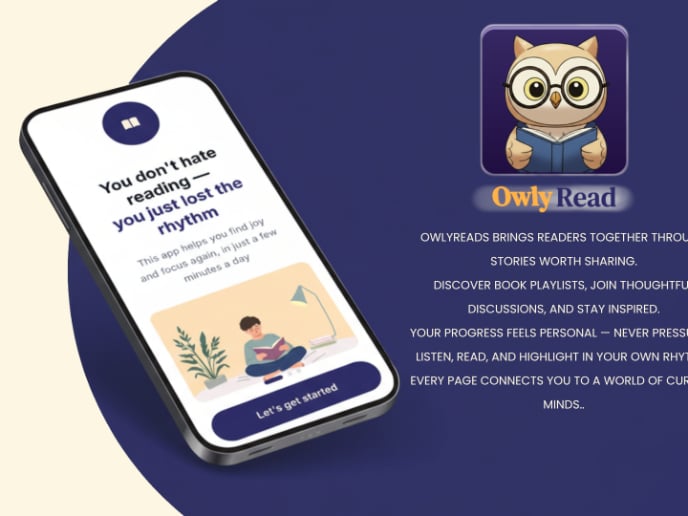
Owlyread-Reading app

PawMate - Supporting your pet adoption journey
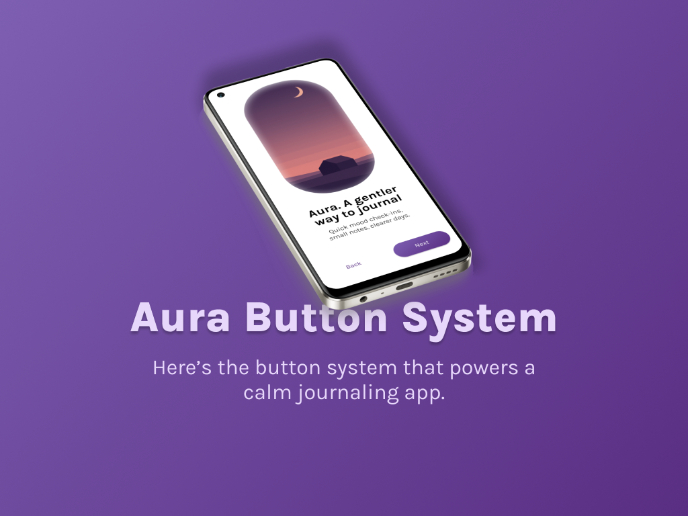
Aura Button System
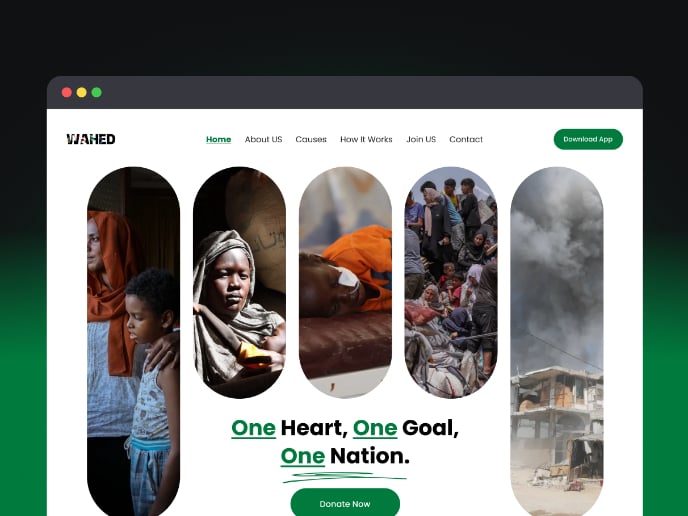
DailyUI #32 | Crowdfunding
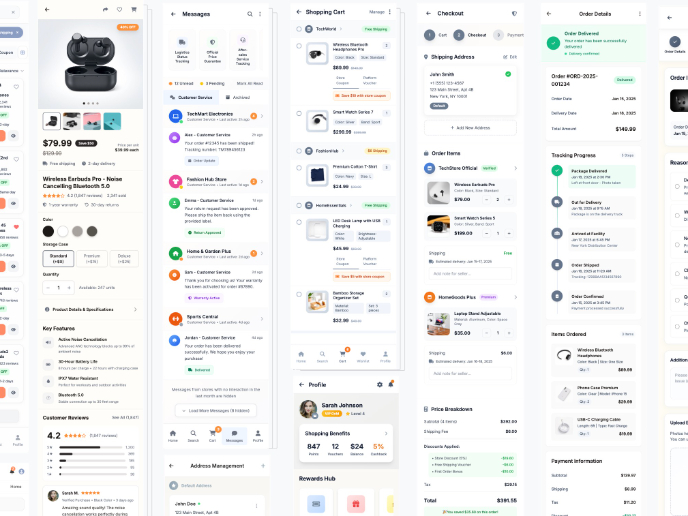
EaseBuy
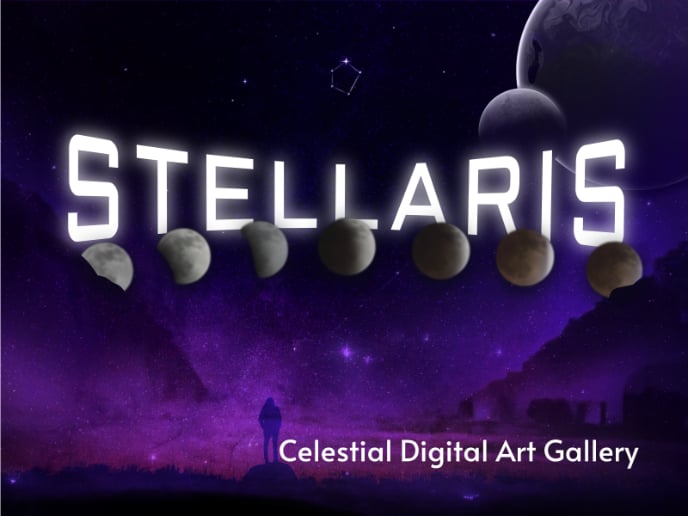
STELLARIS MVP – A Celestial Digital Art Gallery
Popular Courses

Introduction to Figma

Design Terminology


